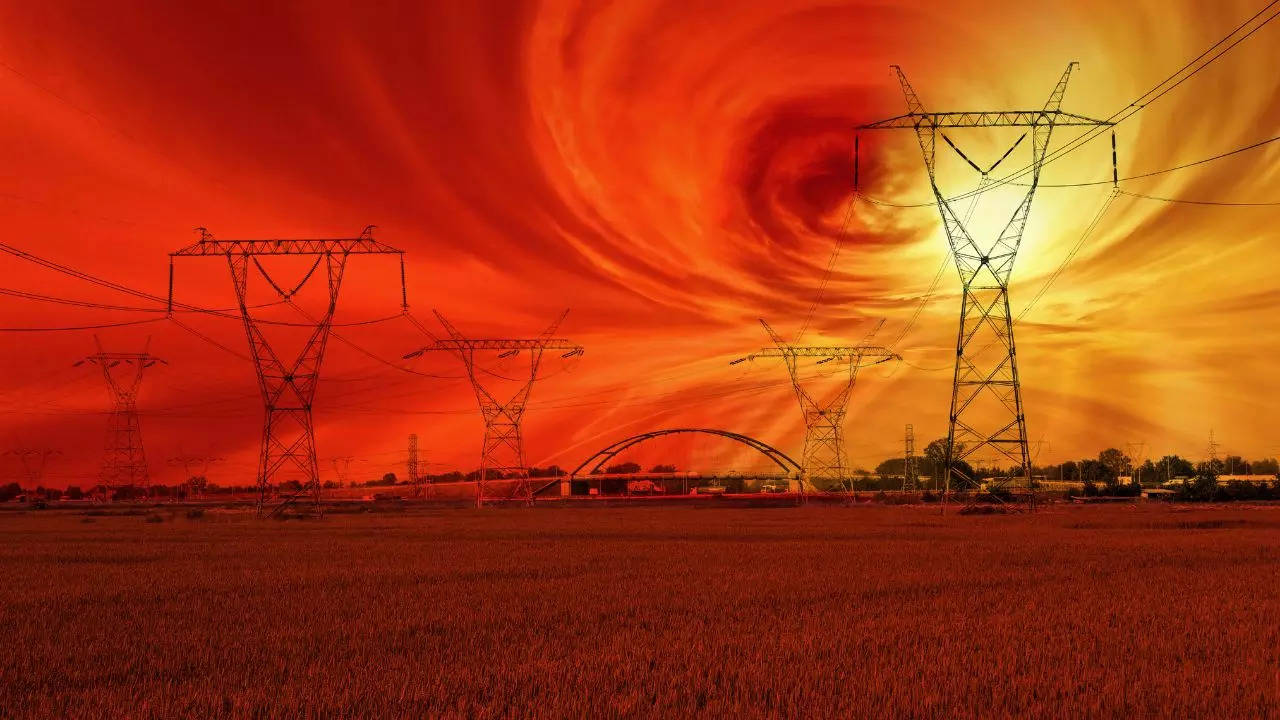Solar storms are massive bursts of energy ejected from the Sun, which, when interacting with Earth’s magnetic field and atmosphere, can cause geomagnetic storms.These storms not only create beautiful auroras but also pose risks to power grids, satellites, communication systems, and navigation equipment. Understanding how these solar phenomena affect us requires a closer look at their mechanics.
How does a solar storm reach Earth?
The Sun, despite appearing calm from Earth, is a dynamic ball of gas, frequently experiencing solar storms, flares, and coronal mass ejections. Solar wind, a stream of charged particles from the Sun’s outer layer, travels at speeds up to 500 miles per second through space. When these particles collide with Earth’s magnetic field, they generate geomagnetic storms. The Earth’s magnetic field usually deflects these particles, but during intense solar storms, some penetrate and interact with atoms in the ionosphere, creating colorful auroras typically seen at the poles. However, during periods of high solar activity, these lights can appear much further from the poles.
How can a solar storm affect the power grid?
Solar storms and geomagnetic storms are closely linked to electricity and magnetic fields. When a solar storm induces currents in Earth’s magnetosphere, these can overwhelm the power grid, potentially exceeding 100 amperes. This surge can damage the delicate components of transformers and cables, similar to an overloaded electrical outlet. Historical examples, such as the 1989 event in New Jersey, illustrate how solar storms can disrupt power supply to millions. Additionally, geomagnetic storms can interfere with satellites, GPS, and radio communications, disrupting various technologies.
What damage a geomagnetic storm can cause?
Geomagnetic storms are classified on a scale from G1 to G5, with recent widespread auroras indicating a G5 event. Past events, like the 1859 Carrington Event, demonstrate the potential severity of solar storms. During the Carrington Event, telegraph systems across the globe were affected, with operators experiencing electric shocks and equipment catching fire. Remarkably, telegraph messages were transmitted using the ambient solar energy alone. Considering today’s advanced and interconnected infrastructure, a similar event could cause unprecedented disruption.
When will a solar storm hit Earth next?
The Sun follows an 11-year cycle of solar activity, with the next peak expected in July 2025. During this period, up to 115 sunspots, which are often sites of solar flares and coronal mass ejections, are anticipated. Although solar wind takes days to reach Earth, providing some warning, extremely powerful storms like the Carrington Event could reduce this lead time to hours. Thus, satellite operators and utilities must remain vigilant.
How can we prevent damage from a solar storm?
Given our reliance on electricity and digital communication, a severe solar storm could have significant consequences. Utilities are developing strategies to mitigate damage, such as installing temporary transformers and using flywheels to absorb excess electricity. Equipment can also be shielded using Faraday cages. In anticipation of a storm, grids may be temporarily shut down to prevent damage.
On an individual level, preparing for power outages with essential supplies is prudent. Continuous funding for institutions like the Space Weather Prediction Center is crucial for monitoring solar activity and providing timely warnings. With these measures, we can better manage the risks associated with solar storms and protect our infrastructure.


